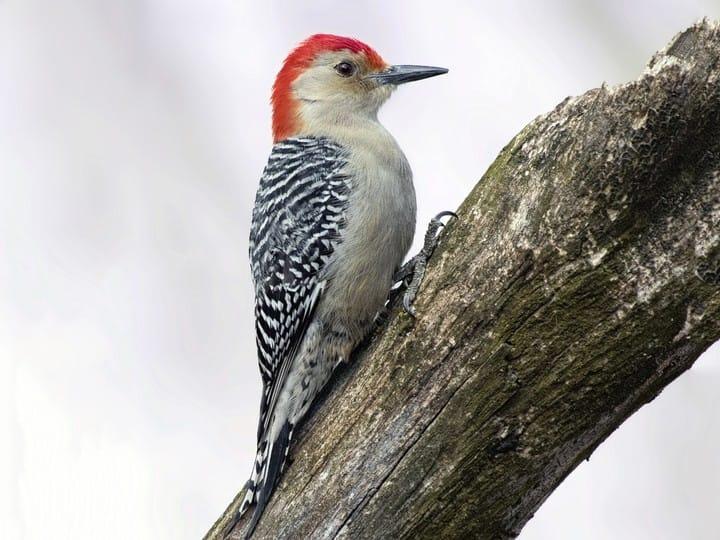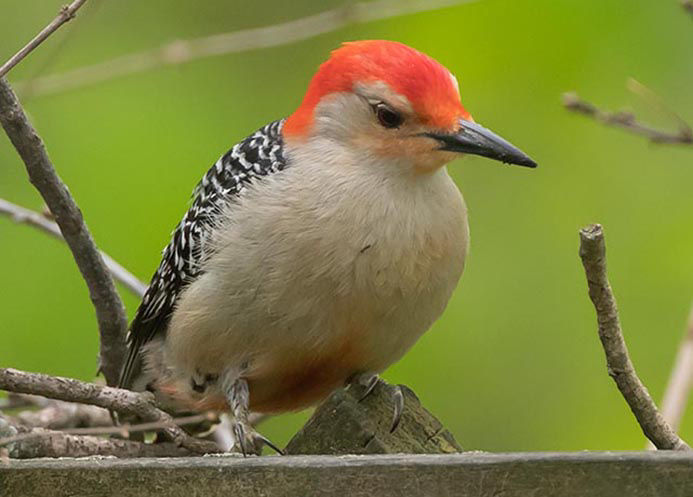Experiencing Woodpeckers in Florida: Species Variety and Recognition
Experiencing Woodpeckers in Florida: Species Variety and Recognition
Blog Article
Woodpeckers Unleashed: Exploring the Marvels of These Knowledgeable Tree Climbers
Woodpeckers, with their distinct markings and balanced drumming resembling through wooded locations, hold an unique area in the bird globe. Their specialized makeup and adjustments allow them to navigate vertical surfaces with unparalleled ability. Their mastery of tree climbing is just one facet of their fascinating habits. As we look into the intricate details of woodpeckers' nesting behaviors, feeding methods, and the continuous conservation initiatives to secure these remarkable birds, a much deeper appreciation for their area in nature unravels.
Composition and Adaptations
When checking out the composition and adjustments of woodpeckers, one can observe amazing functions that allow these birds to flourish in their specialized eco-friendly specific niche. In addition, woodpeckers have zygodactyl feet, with 2 toes encountering ahead and two dealing with in reverse, offering a firm hold on tree trunks while they look for food or drum for communication.
In addition, woodpeckers have an one-of-a-kind tongue structure that is long, barbed, and sticky, enabling them to draw out bugs from holes in timber. This customized adjustment permits woodpeckers to make use of a food source that is hard to reach to many other bird varieties. In general, the composition and adjustments of woodpeckers display the impressive transformative solutions that have actually permitted these birds to thrive in their arboreal habitat.
Drumming Actions
Having explored the anatomy and adjustments of woodpeckers, the focus currently changes to recognizing their drumming actions, a distinct facet of their communication and territorial screens. Drumming is an important type of interaction amongst woodpeckers, offering multiple functions such as establishing territories, drawing in companions, and signaling alarm system. Each woodpecker varieties has a special drumming pattern that aids people recognize participants of their own varieties and identify them from rivals or predators.
Woodpeckers generate drumming sounds by rapidly pecking on powerful surfaces such as dead trees, energy posts, or perhaps steel items, producing a collection of balanced beats. The strength and rate of drumming can vary based upon the objective; as an example, a rapid drumming series might symbolize aggressiveness in the direction of burglars, while a slower and softer drumming pattern might indicate courtship (Woodpeckers in Florida). In addition, woodpeckers may adjust the regularity and period of their drumming to convey specific messages anonymous efficiently
Nesting Behaviors
Exploring the nesting habits of woodpeckers discloses fascinating understandings right into their reproductive actions and environment choices. Woodpeckers visit this web-site are recognized for their special nesting choices, often excavating dental caries in trees to create sheltered rooms for raising their young. These tooth cavities offer not just as a nesting website yet also as a secure haven from predators and harsh weather condition.
Woodpeckers exhibit a high degree of fidelity to their nesting websites, typically going back to the exact same place year after year. This actions highlights the importance of suitable habitat accessibility for their reproductive success. The option of a nesting website is vital for woodpeckers, with factors such as tree species, height, and decay stage playing considerable functions in their decision-making procedure.
Interestingly, some woodpecker species are recognized to dig deep into several cavities within their area, offering themselves with different nesting alternatives. This method may work as a form of insurance policy versus potential risks or disturbances to their primary nesting website.

Feeding Techniques
One of the most unique feeding habits of woodpeckers is drumming, which entails quick pecking on trees to reveal bugs under the bark. Woodpeckers are also understood to excavate tooth cavities in trees to accessibility surprise insect larvae or sap. Some types, like the acorn woodpecker, store nuts in particularly developed holes called granaries.
Conservation Initiatives
Among the intricate feeding methods displayed by woodpeckers, the preservation efforts targeted at guarding these remarkable birds play a critical duty in preserving their habitats and populations. Woodpeckers deal with numerous risks to their survival, including environment loss due to deforestation, climate change modifying their ecosystems, and crashes with synthetic frameworks such as structures and cars - Woodpeckers in Florida. Conservationists are proactively functioning to deal with these difficulties and guarantee the long-term wellness of woodpecker species

Education and learning and public awareness campaigns are also vital components of woodpecker conservation go efforts. By increasing recognition about the significance of these birds in keeping healthy and balanced woodland ecological communities, conservationists can gather assistance for environment preservation campaigns and advertise accountable land management practices. With joint initiatives in between researchers, policymakers, and regional communities, we can collaborate to protect a future where woodpeckers thrive in their all-natural environments.
Conclusion

Report this page